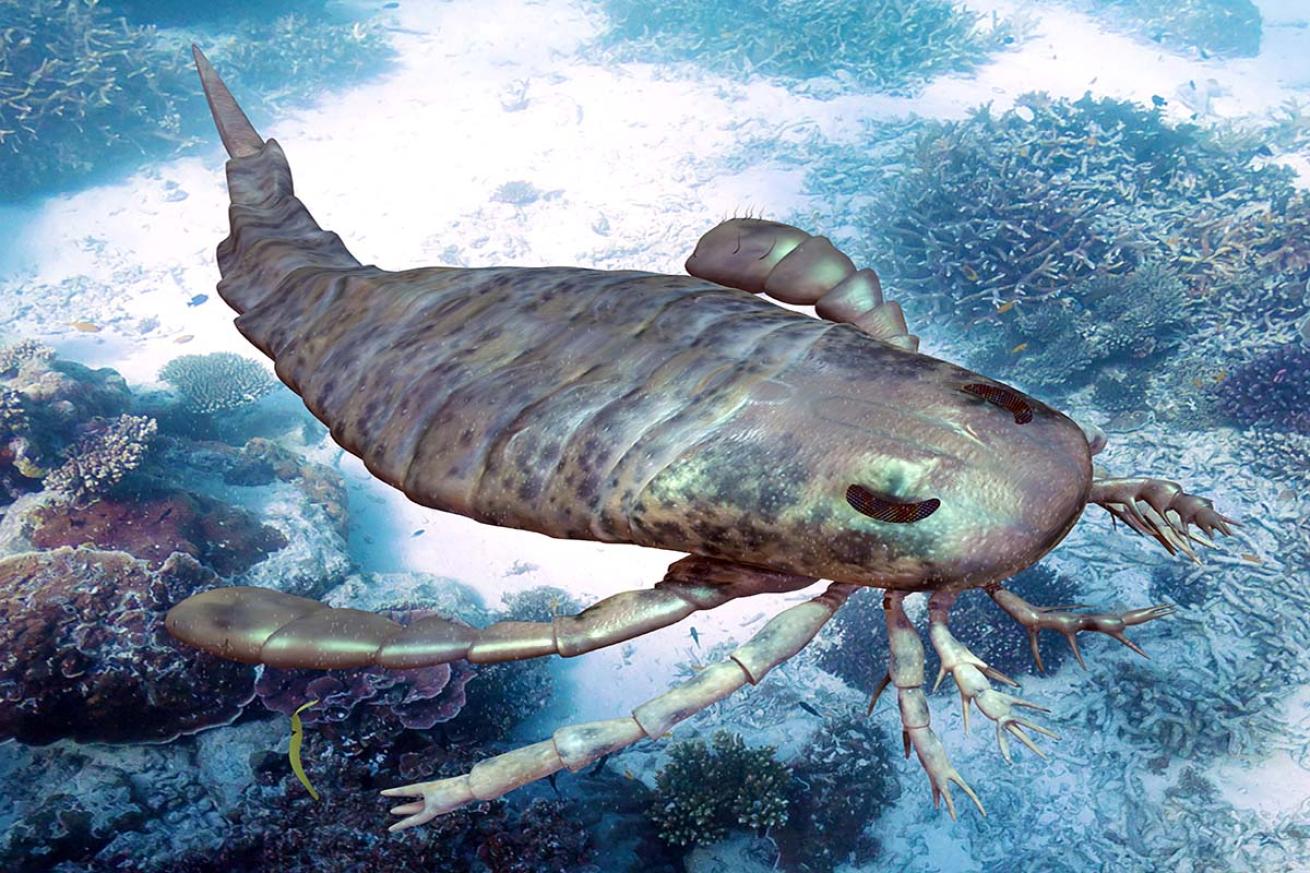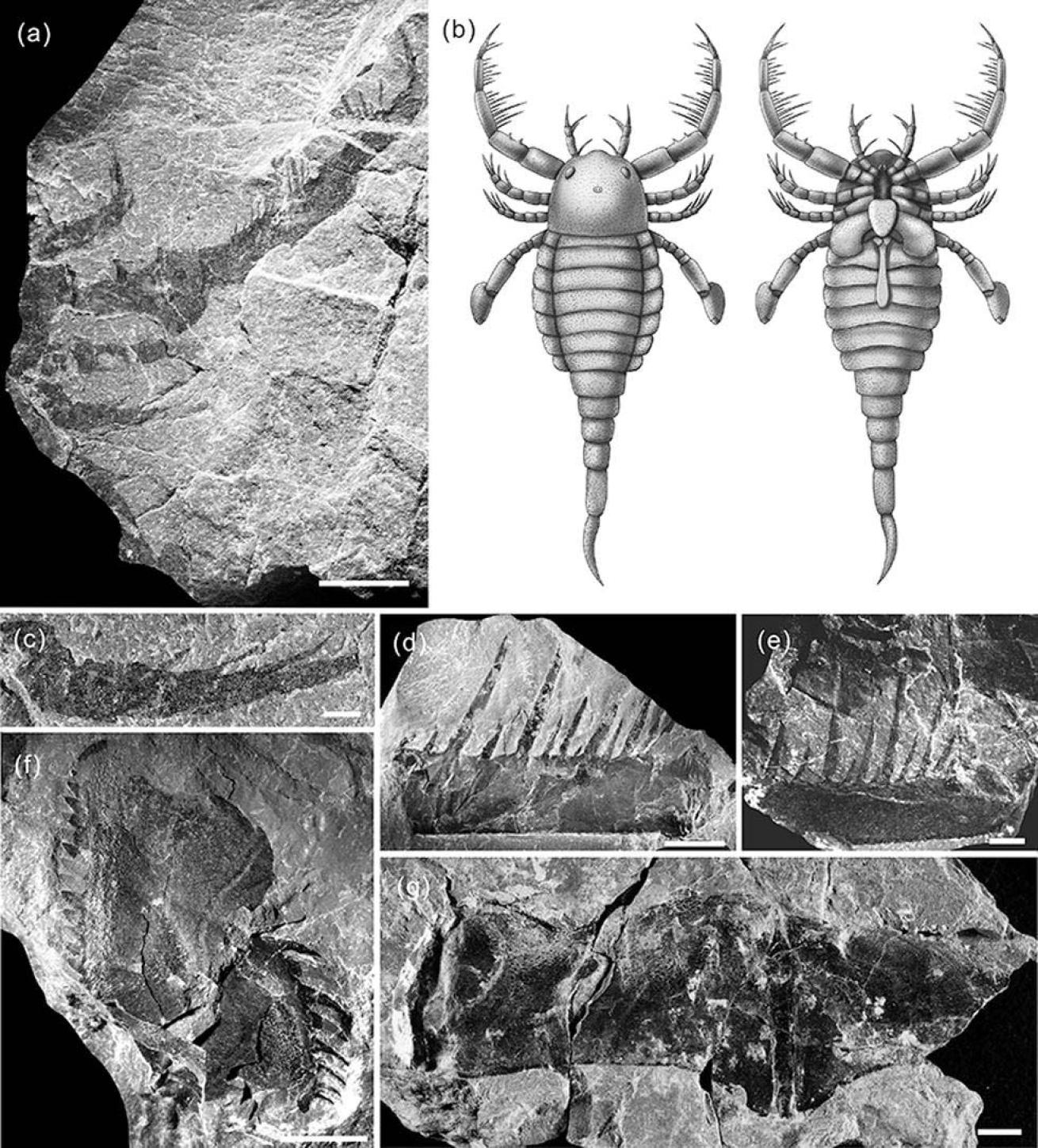Researchers Find Fossil of 400-Million-Year-Old, Dog-Sized Sea Scorpion

Shutterstock.com/Aunt SprayThe largest sea scorpion ever recorded was more than 8 feet long.
There are plenty of interesting-looking creatures to be found underwater today, but they’ve got nothing on the animals of oceans past. A recently uncovered fossil shows that scorpions the size of Labrador retrievers roamed the prehistoric seas.
The newly-discovered specimen was a male what had a thorny mustache to attract females, study contributor Bo Wang tells News 18. It is the first fossil of a prehistoric aquatic scorpion discovered in the last 80 years.
These scorpions, which were about three feet in length, were present in south China during the Silurian geological period, between 443.8 million and 419.2 million years ago. They are distantly related to present-day horseshoe crabs and whip spiders. With no large vertebrate competitors in Silurian era, they were likely top predators in the marine ecosystem.

Nanjing Institute of Geology and Paleontology/ Chinese Academy of SciencesThe new fossil and the study's accompanying artist rendering.
“Sea scorpions include the largest marine predators to have ever arisen in the fossil record, including one species thought to have been more than 2.5 metres [8.2 feet] long,” write Dr. Russell Bicknell, a post-doctoral researcher in Palaeobiology, University of New England, and Dr. Patrick Smith, Technical Officer in the Palaeontology Department at the Australian Museum, in The Conversation. “Back then, some of these giants were effectively in the same place in their food web as the modern great white shark.”
Until scientists from the Nanjing Institute of Geology and Paleontology found the most recent fossil, specimens in the Mixopteridae family — to which this scorpion belongs — were believed to use their tails to kill prey. The newly discovered Terropterus xiushanensis, however, is said to have used its specialized arms to catch prey like fish and mollusks.
“Their second, and especially the third, pair of prosomal limbs are enlarged and very spiny,” says the study. “These limbs were presumably used for prey-capture, and analogies can be drawn with the ‘catching basket’ formed by the spiny pedipalps of whip spiders among the arachnids.”
This distinct differentiation may be because T. xiushanensis is both the oldest known mixopterid as well as the first that would have been part of the Gondwana supercontinent, which was formed when Pangea split in two. The other four mixopterids found before this fossil belonged to the paleocontinent Laurussia, and could grow up to eight feet long. These apex predators were found to have lived between 541 million and 252 million years ago in the oceans around present-day Australia.
“Not only will this help document Australian sea scorpion species better, it will also allow for a more complete understanding of the environments in which they lived,” the study’s authors Bicknell and Smith in The Conversation. “Ultimately, one thing is clear – there is much left to uncover about these titans that swam through Australia’s prehistoric oceans.”










